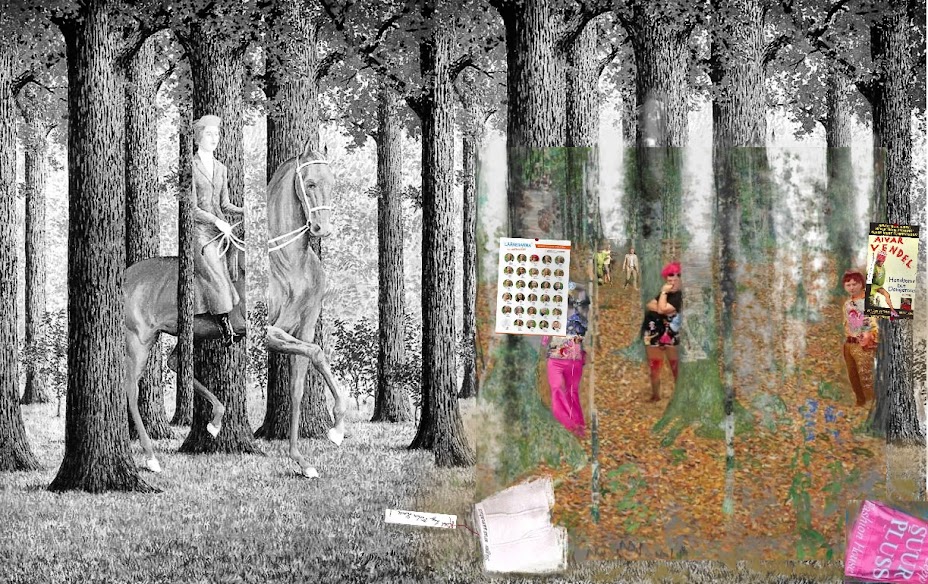M_DU_024 THE BLANK SIGNATURE _ RENÉ MAGRITTE 1965 / KUMARI VAIM 2025
1 h
·
René Magritte’s The Blank Signature (1965) is a compelling and intricate exploration of perception, presence, and illusion—a continuation of the artist's enduring investigation into the boundaries between reality and its representation. Painted during the final years of Magritte’s career, this work exemplifies his mature surrealist vision, in which everyday scenes are subtly but profoundly disrupted to challenge the viewer’s assumptions. At first glance, the painting seems to depict a serene moment: a woman on horseback riding through a forest. However, as the eye lingers, the logic of the image begins to unravel.
Magritte purposefully violates the rules of spatial continuity and visual occlusion. The rider and her horse appear interwoven with the trees—sometimes in front, other times impossibly behind or inside them. This optical ambiguity forces viewers to question the hierarchy of objects in space and the very nature of visual understanding. Most striking is Magritte’s manipulation of “nothingness”—empty spaces and gaps in the forest are granted form and prominence, treated with the same visual weight as tangible objects. This reversal destabilizes our comprehension of what is seen versus what is absent, suggesting that “nothing” may indeed have substance within perception.
This philosophical tension aligns with Magritte’s broader artistic mission: to expose the instability of reality as we perceive it. The painting resists passive viewing; instead, it demands mental engagement, compelling us to reassemble and reconsider the visual field. The Blank Signature is not just a visual puzzle—it’s a meditation on the act of seeing itself, and how what we perceive may be shaped more by cognitive expectation than by physical truth.



Kommentaarid
Postita kommentaar